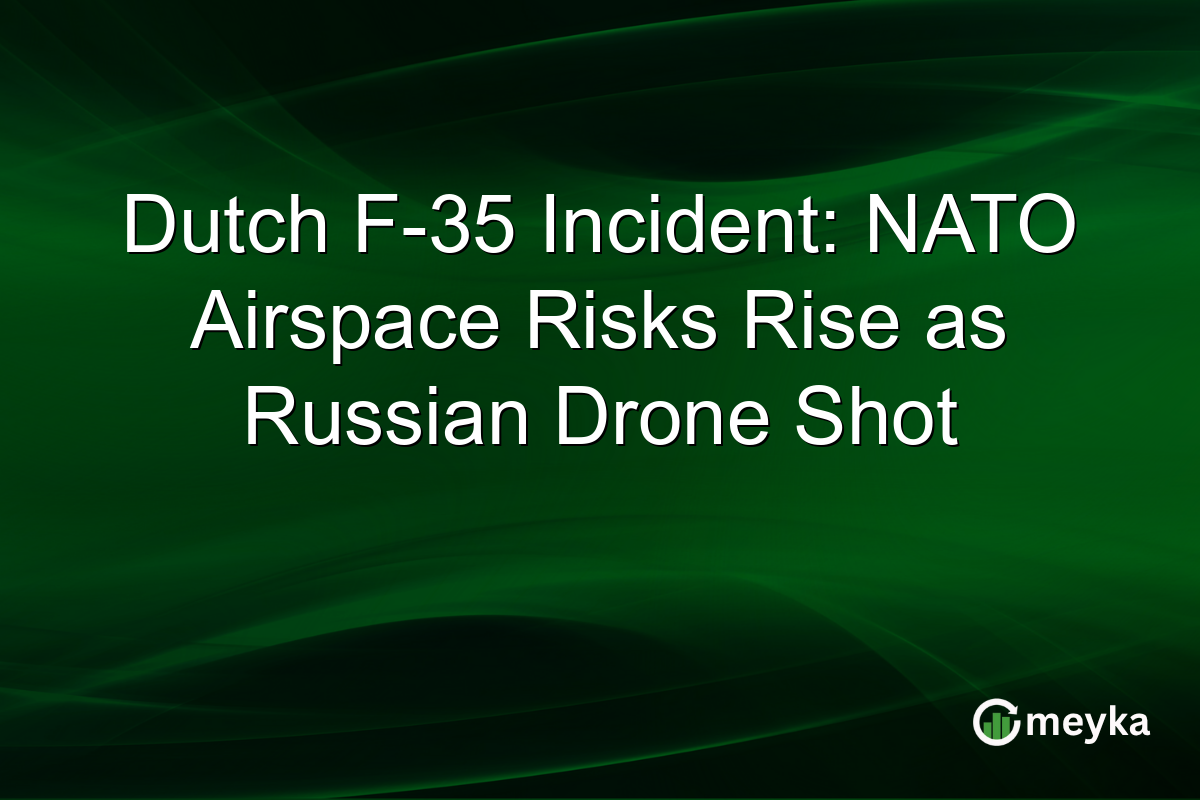Dutch F-35 Incident: NATO Airspace Risks Rise as Russian Drone Shot
In a significant military incident, a Dutch F-35 fighter jet recently shot down a Russian drone near NATO’s eastern border. This event marks a critical point of tension, underscoring the increasing threats to NATO airspace security and highlighting the potential for military escalation in Europe. The encounter has stirred concerns among investors and governments, as it may lead to a shift in defense policies and impact European markets.
Rising Tensions in NATO Airspace
The shooting down of a Russian drone by a Dutch F-35 represents a marked escalation in aerial tensions. This incident, occurring near NATO’s eastern flank, is a stark reminder of the volatile security landscape in Europe. With NATO airspace security increasingly threatened, this development brings to light the challenges facing allied countries in maintaining peace and stability. This shows that geopolitical tensions are rising, necessitating more vigilance. These concerns are shared widely. A tweet from the European Defense Coalition emphasized, “NATO must strengthen its airspace defenses in response to increased incursion risks.” Additionally, the incident has potential ramifications for international relations and defense policies, as nations weigh the balance between aggression and diplomacy.
Military Escalation: Risks and Reactions
The Dutch F-35’s action is not just a defensive maneuver but a strategic signal. The shoot-down highlights how closely watched the skies above Europe have become. Military experts suggest that this could spur a wider review of NATO’s rules of engagement and air defense capabilities. The incident is likely to prompt allied nations to reassess their military readiness and response strategies. This highlights the military escalation risks growing within Europe. Moreover, NATO’s response will be crucial in maintaining strategic coherence among its members. Such incidents could push the alliance to modernize its defense posture further, potentially leading to increased defense spending and technological upgrades.
Implications for European Markets and Policies
The broader implications of this airspace breach touch on economic and policy domains. Rising tensions often lead to uncertainty in financial markets, particularly in defense and aerospace sectors. The heightened risk of military escalation in Europe might result in increased investment in defense stocks as countries bolster their military capacities. Economic steadiness in the region is vital, with potential policy shifts affecting markets and trade. Meanwhile, governments might expedite legislation on air defense advancements and develop strategic partnerships to guard against future incursions. This event underscores the need for cohesive policy frameworks to address security threats effectively, ensuring regional stability while mitigating financial volatility.
Final Thoughts
The Dutch F-35 incident has brought NATO airspace security and military escalation risks to the forefront of European concerns. This event not only questions the robustness of NATO’s current defensive posture but also challenges policymakers to adapt quickly to evolving threats. For governments and investors, understanding these dynamics is key to navigating future uncertainties. As military and economic landscapes shift, strategic foresight becomes imperative in safeguarding European stability and prosperity.
FAQs
The incident reflects rising tensions and security risks within NATO airspace, highlighting vulnerabilities and necessitating strategic military and policy responses.
It could lead to heightened defense spending, modernization of military assets, and reevaluation of NATO’s engagement rules to counter similar threats.
Increased defense investments and market volatility might occur as governments fortify against security threats, influencing economic stability and investor behavior.
Disclaimer:
This is for information only, not financial advice. Always do your research.






